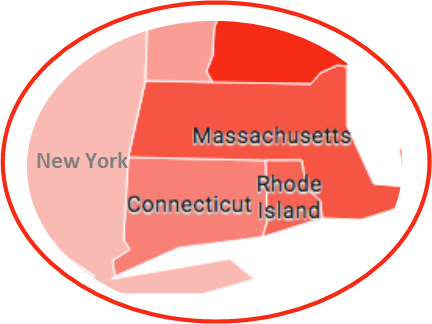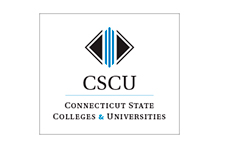As Demographics Change, Connecticut Extends Borders, Colleges Seek More Diverse Student Population
/When it comes to college tuition, Connecticut’s borders are expanding and colleges across the state are focused on potential students that likely wouldn’t have on the radar screen only a few years ago. The impetus is a declining population of college-age students, expected to intensify over the next decade particularly in the Northeast, and declining financial support from state governments. The results are dramatic efforts to further diversify the student populations - in geography, income, ethnicity and other factors, including offering the lower in-state tuition to out-of-state students.
In the case of Connecticut, the state Board of Regents, which oversees four universities and 12 state colleges, has proposed merging the colleges into one statewide college with 12 campuses in a controversial plan that has drawn doubts and substantive questions from students, faculty, and legislators in Connecticut, and the region’s accrediting board, the New England Board of Higher Education, which is considering the plan. It would be the largest merger of colleges in New England’s history, and the resulting college would be among the largest in the nation.
The number of high school graduates in Connecticut is expected to drop 14 percent from 2012-13 to 2025-26, according to reports citing U.S. Department of Education statistics, driven by the nation’s second-largest proportional decline in public school students over the next 10 years. CT Mirror reported this week that “The major organization that accredits colleges has said many questions need to be answered before the new college system is awarded accreditation, which is essential to make students eligible for federal financial aid and to guarantee the college’s degrees have educational value.”
Fall student headcount at the 12 colleges has dropped from a peak of 58,253 in 2012 to 50,548 in 2016, the lowest level in a decade. The four state universities (Central, Eastern, Southern and Western) have seen enrollment decline from 36,629 in 2010 to 33,187 in 2016, the lowest level in this century.
 Even in advance of the merger plan, the Board of Regents has been extending lower tuition offers in every direction, reaching out to students in Massachusetts, Rhode Island, New York and even New Jersey, making offers that the Regents hope will be tough to refuse.
Even in advance of the merger plan, the Board of Regents has been extending lower tuition offers in every direction, reaching out to students in Massachusetts, Rhode Island, New York and even New Jersey, making offers that the Regents hope will be tough to refuse.
Eight of Connecticut’s public colleges and universities extended in-state tuition to residents of neighboring states this academic year, primarily in response to declining enrollment and seeking to boost income. The initiative expanded a pilot program by previously implemented at Asnuntuck Community College in Enfield, just south of the Massachusetts border. Asnuntuck saw a 34 percent increase in students from the Bay State since the program began in June 2016.
Norwalk, Housatonic and the Danbury campus of Naugatuck Valley community colleges extended in-state tuition to New York residents, and t hree Rivers Community College in Norwich does the same for Rhode Island residents. Northwestern Connecticut Community College in Winsted offers in-state tuition to Massachusetts residents, and Quinebaug Valley Community College in Killingly offers in-state tuition to Massachusetts and Rhode Island residents.
At Norwalk Community College, for example, the in-state tuition program reduces the cost for full-time tuition from $12,828 to $4,276 for the 2017-18 academic year, a savings of $8,552 for New York residents, the Norwalk Hour reported.
In addition, students from New York and New Jersey considering Western Connecticut State University will be able to pay in-state tuition — less than half the current rate for out-of-staters – beginning in the fall. After receiving Board of Regents approval, the university announced a two-year pilot program to combat declining enrollment. Under the new pricing, students from the two states will pay $10,017 a year instead of the $22,878 out-of-state rate, the Danbury News-Times reported. The program extends a smaller across-the-border recruitment effort that offered seven Hudson Valley counties in-state rates last fall, which led to an increase in students residing in those counties from 74 in the fall of 2016 to 243 in 2017.
The Boston Globe reported this month that the nation’s high school population “is becoming increasingly diverse and increasingly unable to afford high tuition prices. Additionally, experts predict a major drop in the number of high school graduates overall after the year 2025 — especially in New England — because people have had fewer babies since the 2008 economic recession. As a result, local colleges will have to work harder to bring students to campus and offer them significantly more financial assistance. And some of them, experts predict, will find this a daunting new calculus, leading to more college mergers and even closures.”
At Trinity College in Hartford, the Globe reported, “Angel Perez, the vice president for enrollment and student success, met with his staff to formulate a plan for how they will recruit amid the expected demographic shifts. “This is the biggest challenge higher education has right now,” Perez told the Globe. When Perez sends out his recruiters each year, he urges all of them to seek out low-income, first-generation students, even though it can be more time-consuming and expensive, the Globe reported. The paper noted that they “meet students not only during the day at high schools but increasingly at after-school programs that help such students successfully make it to college.”
The Globe also noted that in a report released in December, Moody’s Investors Service “changed its outlook for the higher education industry from stable to negative because of the expected slowing of tuition revenue growth.”





























